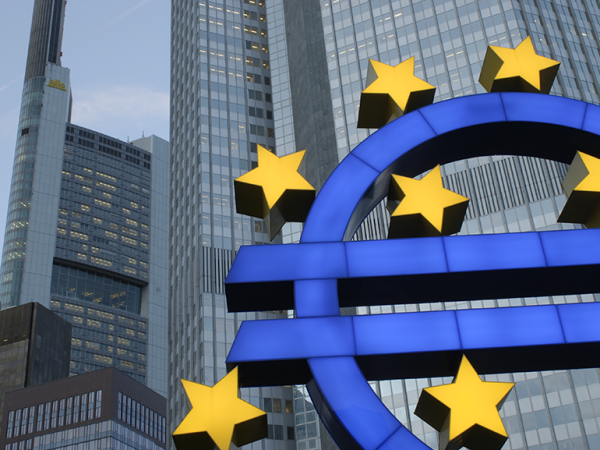Timing of ECB Cut Hangs on Wage Data
The EUR/USD (EUR/USD) pair remained steady on Tuesday, April 9, ahead of the release of US inflation data and the European Central Bank (ECB) interest rate decision. On the other hand, European stocks closed lower on Tuesday as investors stayed cautious before Thursday's (April 11) policy meeting due to uncertainty around how President Christine Lagarde will communicate the central bank’s intentions for future actions.
While the results of Thursday’s upcoming decision are yet to be determined, the ECB is expected to keep rates on hold. Many investors will be watching when the ECB and the Fed may start cutting rates against global nervousness over the timing of interest rate cuts.
In addition, a higher US CPI print on Wednesday, April 10, may give the ECB some room to consider the timing of rate cuts. However, the March inflation data are expected to show moderate monthly and annual inflation and may prove a non-event.

No Rate Changes Expected, Eyes Set on June
The ECB kept borrowing costs at record highs at the March meeting but laid the groundwork to lower rates in June. Despite markets expecting no rate changes at the upcoming ECB meeting this Thursday, Lagarde will likely discuss inflation data and the potential for a June rate cut, especially if she signals confidence that inflation is falling to target. In fact, the market expects the ECB to cut rates by 25 basis points at its June meeting.
Recent inflation in the Eurozone has supported the June cut narrative, with economist consensus pointing to an imminent easing cycle. Financial conditions have eased to some extent, and services inflation has weakened, leading to repricing on market expectations. Still, despite ECB officials seeing enough evidence to lean towards imminent rate cuts, they still prefer to wait for further confirmation before taking action. This is seen as reflecting a recognition that disinflation may be slower than expected.
Moreover, many believe that the ECB will likely affirm its plans to cut rates soon but provide no further guidance beyond the June cut, given the continuing disinflationary narrative. This would at least rule out a larger 50-basis point cut. On the flip side, some economists argue that the ECB will cut rates by 90 basis points this year, with few observers expecting four rate cuts. Another cohort also claims the ECB is not yet ready to signal rate cuts. Still, the gap between German and US 10-year yields has been near its widest since early November 2023, reflecting expectations that the ECB would at least cut rates before the Fed.
The ECB may also choose to emphasise data dependency around future rate cuts, aiming to toughen market expectations. Critics say the ECB's decision to wait for more wage data before cutting rates reflects a "hawkish bias" that could trigger stagnant growth.
ECB to Scrutinise Wage and Inflation Data
Wages are a particularly interesting piece of data the ECB has been watching and is expected to continue doing so. Wages would allow ECB members to assess the sustainability of the disinflation narrative and become more opinionated. Lagarde has also reiterated that the ECB wants to see first-quarter wage data before deciding on the timing of any rate cut and inflation falling towards its 2% target. Wage growth and inflation data will be out in May and June before the June meeting.
Overall, the ECB wants to see a slowdown in wage growth. Despite salary growth in Europe is expected to be around 3.8% over the next year, down from 4.5% prior, ECB chief economist Philip Lane has said wage growth of around 3% would be consistent with the ECB's 2% inflation target.
Still, lower wage growth will help keep inflation under control and allow the ECB to cut interest rates sooner.
Nonetheless, while a rate cut in June seems likely, the ECB is unlikely to commit to any further moves beyond that due to uncertainties around inflation, which could still surprise to the upside, particularly in services and domestic inflation. The bank has also maintained concerns over the possibility of stronger-than-expected activity and wage data by then. (Source: Reuters)
Outlook Hangs on Rate Differentials
Some big firms are selling US Treasuries to buy European government bonds, expecting lower European inflation and the ECB to cut interest rates sooner than the Fed. The ECB currently forecasts lower inflation and GDP growth for the Eurozone compared to the Fed's projections for the US, supporting a stronger case for rate cuts in Europe.
A widening of interest rate differentials between the Eurozone and the US would favour further EUR/USD downside. Still, EUR/USD currently looks expensive even without a dovish signal from the ECB. On the other hand, a mere signal of a June rate cut may not impact the pair much. This is because the latest ECB minutes from the March meeting showed concerns about persistently low services inflation and the difficulty of bringing headline inflation down to target.
Rising oil prices are seen as another potential risk, with Brent crude (EB) surging 15% since the start of the year. Higher oil prices could impact inflation, slow ECB rate cut plans and impact EUR/USD. However, ECB members are not worried that it will affect the bank's policy path. While above the ECB's forecast, current moves are considered small compared to those after the Ukraine invasion and any impact is seen as temporary.
Despite these predictions, it is important to note that only time will tell how the markets will be affected.
Conclusion
The impending ECB meeting presents a crucial juncture for monetary policy direction that investors should watch for clues. As the ECB's decision-making hinges on upcoming inflation and wage data and the ECB is expected to cut no rates in April, the focus will remain on the ECB's communication and whether it leans towards any June adjustments.